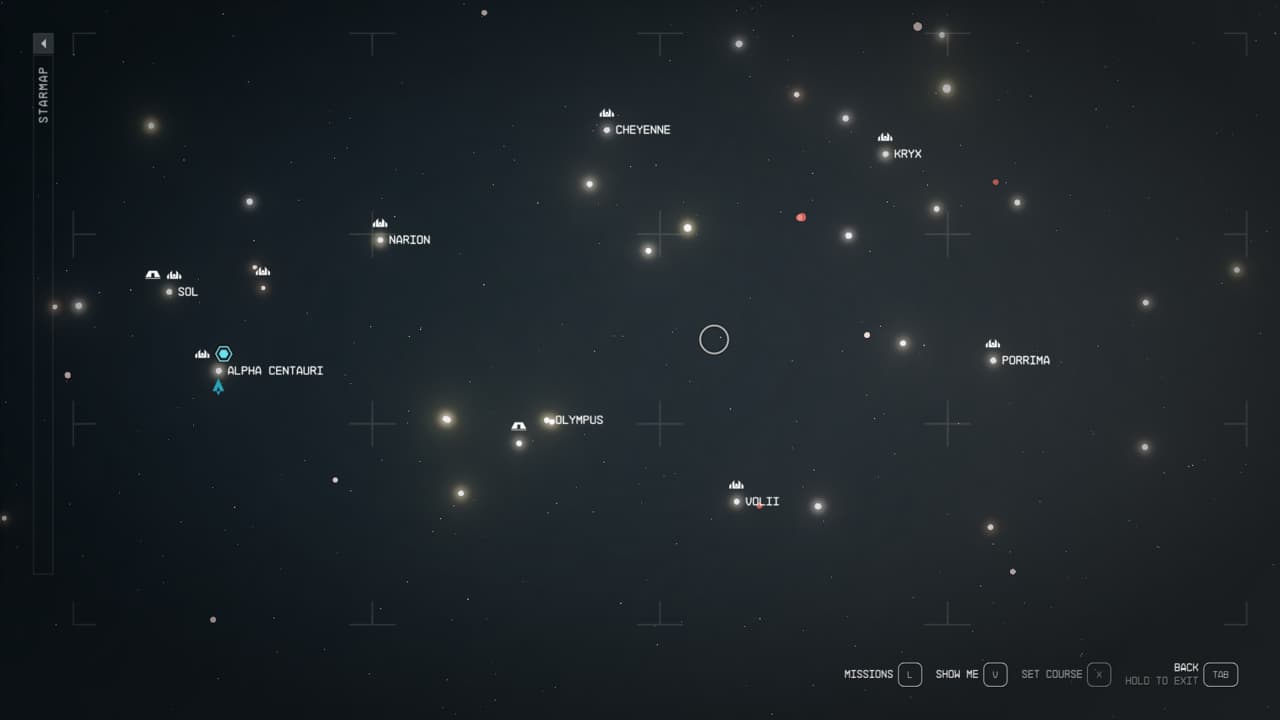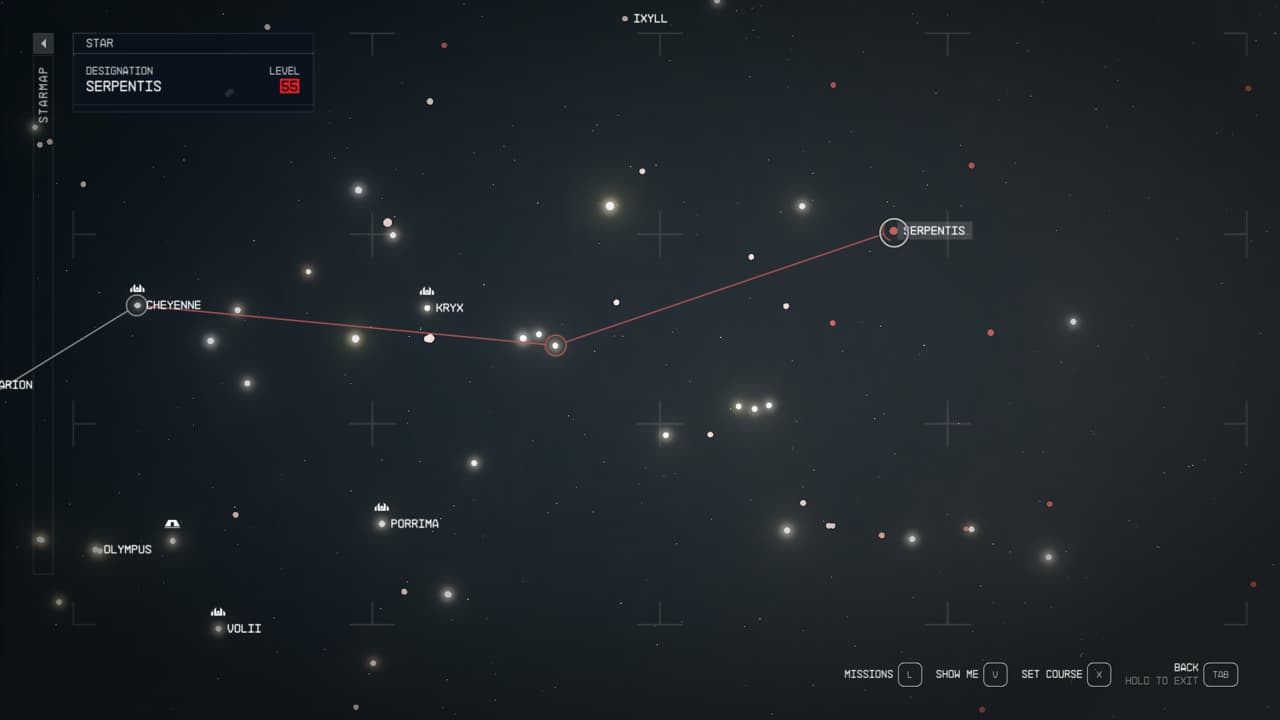Video Gamer is reader-supported. When you buy through links on our site, we may earn an affiliate commission. Prices subject to change. Learn more
The Starfield star systems are home to over a 1000 planets, consisting of both hand-crafted locations and procedurally-generated points of interest for players to explore. From the Goldilocks zone of Alpha Centauri to the distant Bohr system, these systems make up the Settled Systems.
You’ll find a full list of all the Starfield systems below. For help starting your journey through the cosmos, check out our Starfield tips and tricks beginner’s guide, Starfield quest list, and how to get an excellent ship early on with the Lair of the Mantis puzzle solution.

Starfield star systems
Starfield has over a hundred star systems.
Here’s a list of all the Starfield systems:
- Alpha Andraste
- Altair
- Bessel
- Beta Andraste
- Carinae
- Eta Cassiopeia
- Nikola
- Lunara
- Cheyenne
- Mahed
- Leviathan
- Serpentis
- Bara
- Rutherford
- Charybdis
- Maal
- Rana
- Pyraas
- Newton
- Nemeria
- Bardeen
- Bradburry
- Mcclure
- Groombridge
- Rasalhague
- Sakharov
- Linnaeus
- Oborum Prime
- Oborum Proxima
- Guniibuu
- Kumasi
- Ursae Majoris
- Ursae Minoris
- Alpha Marae
- Beta Marae
- Schrodinger
- Piazzi
- Vega
- Narion
- Valo
- Andromas
- Porrima
- Sagan
- Kryx
- Tidacha
- Arcturus
- Muphrid
- Heisenberg
- Zosma
- Shoza
- Ixyll
- Sparta
- Zelanzny
- Bannoc
- Bannoc Secondus
- Bel
- Syrma
- Freya
- Ophion
- Nirah
- Moloch
- Strix
- Fermi
- Bohr
- Tau Ceti
- Luyten’s Star
- Procyon A
- Procyon B
- Sol
- Barnard’s Star
- Wolf
- Celebrai
- Copernicus
- Copernicus Minor
- Decaran
- Sirius
- The Pup
- Alpha Centauri
- Toliman
- Eridani
- Kapteyn’s Star
- Delta Pavonis
- Indum
- Aranae
- Olympus
- Alpha Tirna
- Beta Tirna
- Volii
- Feynman
- Xi Ophiuchi
- Zeta Phiuchi
- Bolivar
- Rivera
- Nirvana
- Coucault
- Kang
- Marduk
- Algograb
- Alchiba
- Heinlein
- Delta Vuples
- Gamma Vuples
- Masada
- Enlil
- Alpha Ternion
- Beta Ternion
- Proxima Ternion
- Katydid
- Archimedes
- Hawking
- Huygens

Starfield star systems explained
You can view Starfield systems by loading up the star map from the Data Menu. Doing so will give you an overview of where each system appears in the Settled System. Selecting one of the systems gives you a brief overview of its characteristics, including its class, temperature, mass, radius, and magnitude, along with all the planets and moons it houses.
To help players, the systems are colour-coded on the star map:
- White dot – denotes a system you haven’t visited but can grav jump to directly.
- White dot with a halo – denotes a system you’ve visited.
- Red dot – denotes a system you haven’t explored and can’t grav jump to directly.
To reach a red start, plot a course to the system by clicking on it. This will bring up a grav jump route, which you’ll need to follow to reach the system. To make this easier, we recommend upgrading your reactor in the ship builder at any Ship Services Technician to increase your ship’s grav jump lightyear distance.
That covers the Starfield systems. For more on the bodies that make up these systems, read up on the Starfield planets, including Jemison, Mars, and Gagarin. We also have guides covering where to get the Bounty Hunter spacesuit, where to get the Mark 1 Spacesuit, the best Starfield spacesuits, and where to get Digipicks.
How many star systems are in Starfield?
Starfield has over 100 star systems.
Will Starfield have full planets?
Starfield has over 1000 planets to explore, but only around 100 of them will contain life.

